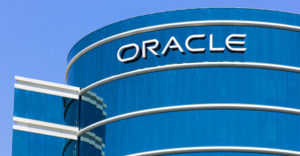Zoho might have had it as close to right as possible a couple years ago when they named their flagship product Zoho One and called it the operating system for business.
Over more than 20 years we’ve watched as CRM went from a bunch of disparate front office apps, to a suite, and then to a platform for building, maintaining, and most importantly customizing front office applications.
We’re at the point now that there are numerous platform-based front office suites that give their users the ability to modify business process support on the fly in a direct effort to keep up with changing business conditions.
This kind of flexibility is driving digital disruption, which is already an old term. I like to think about the drive for business agility being driven by software flexibility. Agility is what companies buy and flexibility is what delivers it; and that, as far as I can tell, is what digital disruption is at its core.
Hourly Adaptation
How far along are we? Not long ago I completed a study of DevOps practices and discovered that a small but growing percentage of companies using Salesforce now routinely change apps and deploy the changes in a single day. Some even do this miraculous turnaround in an hour.
Think about that, some of your competition is adapting to changing business conditions hourly. Does every business need this kind of turnaround? Probably not, but I can’t think of an exception. We all need the capability even if we don’t change systems that fast every day.
Hourly adaptation is just one facet of this thing, another is building whole new apps to support new business models. As markets increasingly drift toward commoditization there are fewer opportunities to differentiate on traditional capabilities such as your supply chain or financing. Increasingly it’s about “doing this deal now” because it won’t be there tomorrow.
Then there’s the facility with which vendors are now bringing to market suites of CRM already adapted to specific industry verticals. That’s not necessarily the only approach to verticals either.
Zoho had an analyst conference last month and reminded us that many businesses don’t benefit enough from verticalized suites; so its approach has been to deliver well-crafted modules that customers can put together in ways that make the most sense for their businesses. Of course, this assumes the business can add its secret sauce.
It’s an approach that acknowledges the difficulty of adapting an industry specific data model and instead uses process needs to guide the deployment of running software. This is especially useful to SMBs whose secret sauce is often a quirky set of processes that beats the competition to the punch or just wow’s customers. Importantly it is an approach that an increasing number of larger companies are taking for similar reasons.
Zohonomics
Zoho’s differentiation doesn’t end with its modular approach. The company was founded more than 20 years ago in India and has been self-funded from the get-go. That start has colored their approach to business in some interesting ways.
For instance, the company is fond of building things itself and that includes its software, obviously, but also its people. Zoho hires people out of secondary school and trains them in an internal educational program to ensure that they are trained in exactly the things they need to succeed at Zoho. The so-called “Zoho way” extends from there.
Zoho builds things that are also generally available on the open market; like word processors and meeting/conference systems. You might think this is unnecessary and you’d be right; except that Zoho has broken into the top tier of CRM companies at a very interesting time in the lifecycle of CRM.
I’d say the CRM market is at a point where it is moving aggressively toward commoditization and the margin erosion that goes with it. In such a world, keeping costs low enables a company to better compete against companies with products that might be amalgams of higher priced systems. This would also include systems assembled from acquisitions. The cost of an acquired system has to be reflected in the combined price offered by the acquirer.
The total price of ownership is very much on the minds of the people who run Zoho and contributes to their outlook on economics or as they call it, Zohonomics. For a company that was founded in India and got its first successes in non-first-world markets, cost was critical and an important differentiator. What’s interesting now, is that this company is already hardened to the demands of a commoditizing market and so bears close scrutiny going forward.
Zoho wasn’t the only company making news recently, as Microsoft introduced vertical industry systems including one for nonprofits. You could say Zoho and Microsoft displayed mirror image solutions in some ways.
Microsoft Industry Clouds
To borrow a phrase, Microsoft appears to be all-in on its effort to bring to market industry-specific cloud solutions.
Last month the company introduced Microsoft Cloud for Financial Services, Microsoft Cloud for Manufacturing, and Microsoft Cloud for Nonprofit. The announcement also included the first update to Microsoft Cloud for Healthcare, and the public preview timing for Microsoft Cloud for Retail.
Microsoft appears to be following an established path to greater application specificity that also has been demonstrated by others such as Salesforce; especially since its acquisition of Vlocity. But even apart from the impact of Vlocity, Salesforce developed a solid salient in philanthropy and nonprofits, among other areas.
The rush to cloud-based, industry-specific solutions makes a great deal of sense and could only happen once a company had developed and stabilized its platform; including development and maintenance for systems loosely crafted on the CRM model.
As I’ve mentioned elsewhere, CRM has become the prototype for all manner of apps that we would have called database apps a generation ago. They’re relatively simple applications with deep databases and a user interface or report that displays a specific cut of the data.
Of course, that’s where the comparison ends and it’s also the reason for CRM’s perceived flexibility. The additional functions like process flow, analytics, machine learning and much more combined with code generators that weave all of that together into running apps are what’s enabling vendors to announce systems as diverse as financial services and nonprofits in a single day.
Flourishing Partner Ecosystem
So, what’s up with Microsoft? There is no doubt that with its deep pockets and wealth of talent that the company can accomplish whatever it sets out to do. That said, you have to look at the solutions on offer and understand that they are a down payment on future and grander functionality.
Each announcement comes with a data model and a roadmap for layering more functionality on top. The older app, Microsoft Cloud for Healthcare, provides a vivid demonstration of how the company executes on its roadmap and vision. Newer apps, like Microsoft Cloud for Nonprofits deliver the data model and some initial functionality like fund raising, program design and delivery, and volunteer management that prove useful in the real world as well as a promise of more to come.
One other thing that’s common to all Microsoft Clouds is a large and growing partner ecosystem. It’s the partners who will take the cloud capabilities and hone them into point specific solutions which is as it should be. The partners are the ones who work under a business microscope understanding what works and what almost works.
Also impressive is the Microsoft Health Cloud. Like other cloud healthcare solutions, it is built with the implicit understanding that other data and information modes have been in place for decades and it is trying to fill the sizable holes between those systems.
So, Health Cloud’s drivers are such things as enhancing patient engagement, empowering health team collaboration, improving clinical operational insights, and — as always — protecting sensitive health information. These are systems of knowledge over systems of record.
At some point though Microsoft and every cloud company with an interest in healthcare is going to have to wrestle with the legacy systems that were, either by omission or commission, developed over time as information islands.
The great information sharing we see in healthcare today is something of a chimera; it looks real enough, but eventually you come to understand that the best information sharing is a hub-and-spoke model between providers and institutions.
That’s not much of a problem until a patient with an emergency or one that’s from out of town shows up. Sharing information in such circumstances often takes you back to the age of networking by fax machine.
A New Social Contract
The nonprofit side couldn’t be more different in those respects. Nonprofits and philanthropic organizations, especially those building relationships with for profit companies, are bringing forth a new model for business from whole cloth.
They are embracing the Business Roundtable’s declaration that the modern corporation owes duties to a network of constituents. Not only shareholders, but now to employees, partners, customers and local communities too.
I believe a new social contract is being formed and it will depend on products like the Microsoft Nonprofit Cloud to reach its potential.
All of this started with CRM more than twenty years ago. It’s been quite a ride and it appears that the next twenty years will be every bit as interesting.





























































